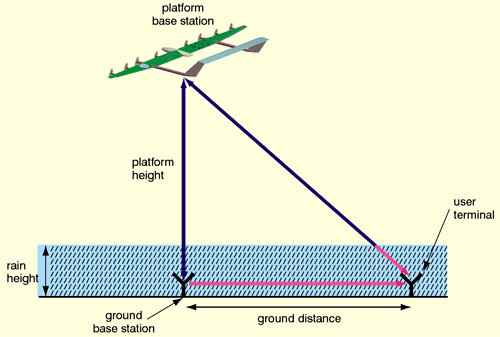Research and development on HAPs is being conducted in Europe, the U.S. and Japan. People are testing balloons, airships, planes, and tethered aerostats. If you are thinking "Hindenberg," bear in mind that new envelope materials that are strong, UV–resistant and leakproof are available today.

- 245 x 145 x 87 feet
- Proprietary lifting gas technology
- Outer envelope covered in film solar panels
- Solar powered electric motors
- Held in position using 6 onboard GPS units
- Desired altitude: 65,000 feet
- Line-of-sight to a 300,000 square mile area
- Controlled by earth stations on the ground
- Flight time: 18 months
